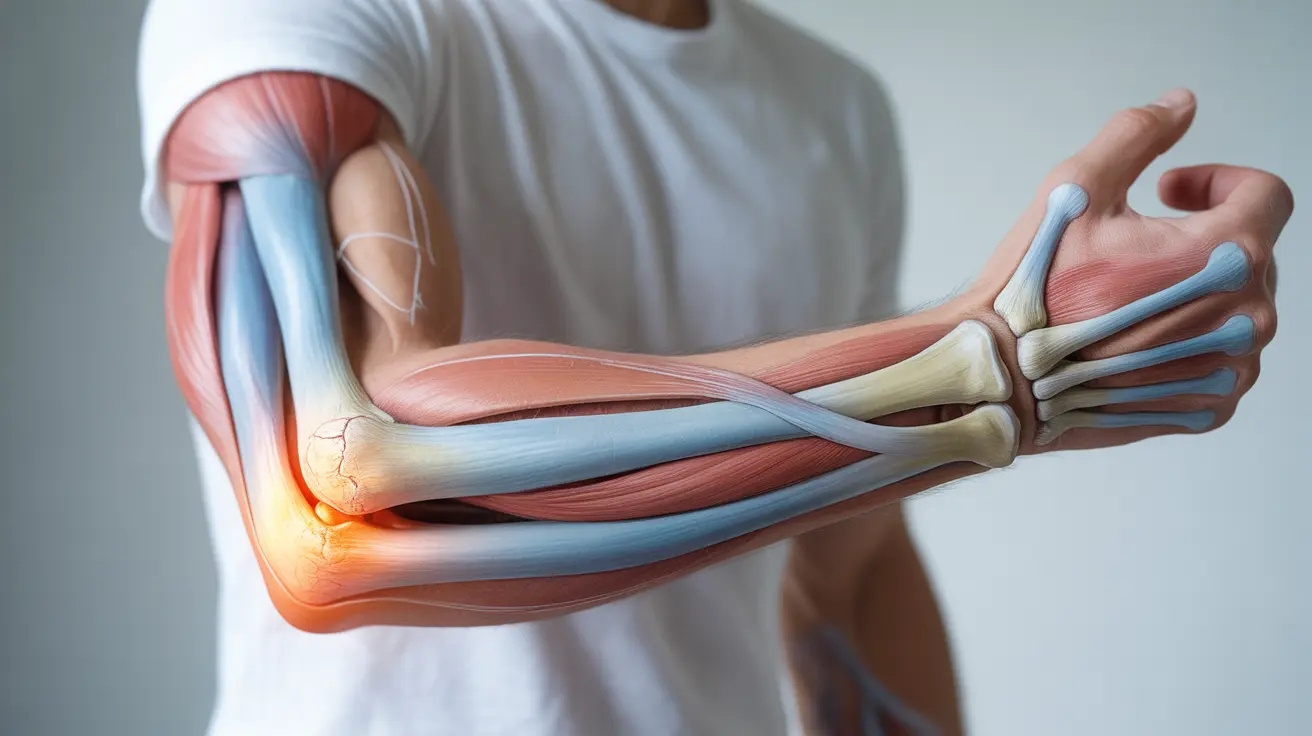Golfer's elbow, or medial epicondylitis, can significantly impact your daily activities and athletic performance. This comprehensive guide will walk you through effective self-care strategies to manage symptoms, reduce pain, and prevent recurrence of this common condition that affects both athletes and non-athletes alike.
Understanding proper self-care techniques is crucial for recovery from golfer's elbow and maintaining long-term elbow health. From targeted exercises to practical lifestyle modifications, these evidence-based approaches can help you manage symptoms effectively at home.
Understanding Golfer's Elbow and Its Symptoms
Golfer's elbow occurs when the tendons connecting your forearm muscles to the inside of your elbow become inflamed and painful. Common symptoms include:
- Pain and tenderness on the inner side of your elbow
- Weakness in your hands and wrists
- Stiffness in your elbow
- Pain when flexing your wrist or grasping objects
Essential Stretching Exercises for Relief
Begin with gentle stretches to improve flexibility and reduce tension in the affected area. Always perform these exercises slowly and stop if you experience increased pain.
Wrist Flexor Stretch
Hold your affected arm straight out in front of you with your palm facing up. Use your other hand to gently pull the fingers of your affected hand down toward the floor. Hold for 15-30 seconds and repeat 3-4 times.
Forearm Pronation and Supination
With your elbow bent at 90 degrees, slowly rotate your palm up and down. Perform 10 repetitions, 3 times daily.
Strengthening Exercises for Recovery
Once stretching becomes comfortable, incorporate these strengthening exercises to rebuild muscle support around the elbow:
Wrist Curls
Rest your forearm on a flat surface with your wrist hanging off the edge. Hold a light weight and slowly curl your wrist upward. Perform 3 sets of 10 repetitions.
Grip Strengthening
Squeeze a stress ball or therapy putty for 5-10 seconds. Repeat 10 times, several times throughout the day.
Ice and Heat Therapy Protocol
Proper timing of ice and heat application can significantly aid recovery:
- Apply ice for 15-20 minutes immediately after activity or when experiencing acute pain
- Use heat before stretching exercises to increase blood flow
- Alternate between ice and heat treatments for optimal results
Using Compression and Support
A properly fitted compression brace can provide valuable support during daily activities and exercise. Wear the brace during activities that typically aggravate your symptoms, but avoid becoming dependent on it for all activities.
Activity Modifications for Prevention
Implement these changes to prevent symptom recurrence:
- Use proper form during sports and exercise
- Take regular breaks during repetitive activities
- Maintain good posture while working
- Use ergonomic tools and equipment
- Gradually increase activity intensity
Frequently Asked Questions
What are the best self-care exercises to relieve pain from golfer's elbow?
The most effective exercises include wrist flexor stretches, forearm pronation/supination movements, and gentle strengthening exercises like wrist curls and grip exercises. Start with stretching before progressing to strengthening exercises.
How can I safely perform stretching and strengthening exercises for golfer's elbow?
Begin with gentle stretches, holding each for 15-30 seconds. Perform exercises slowly and stop if pain increases. Start strengthening exercises only when stretching becomes comfortable, using light weights initially.
How do ice and heat therapy help in managing golfer's elbow symptoms at home?
Ice therapy reduces inflammation and acute pain, while heat therapy increases blood flow and flexibility. Apply ice for 15-20 minutes after activity, and use heat before stretching exercises for optimal results.
When should I use a compression brace or support for golfer's elbow during daily activities?
Wear a compression brace during activities that typically cause pain or discomfort. Use it during sports, repetitive tasks, or when symptoms flare up, but avoid constant use to prevent muscle dependency.
What activity modifications can prevent worsening or recurrence of golfer's elbow?
Key modifications include using proper form during activities, taking regular breaks, maintaining good posture, using ergonomic equipment, and gradually increasing activity intensity. Avoid sudden increases in repetitive movements.




